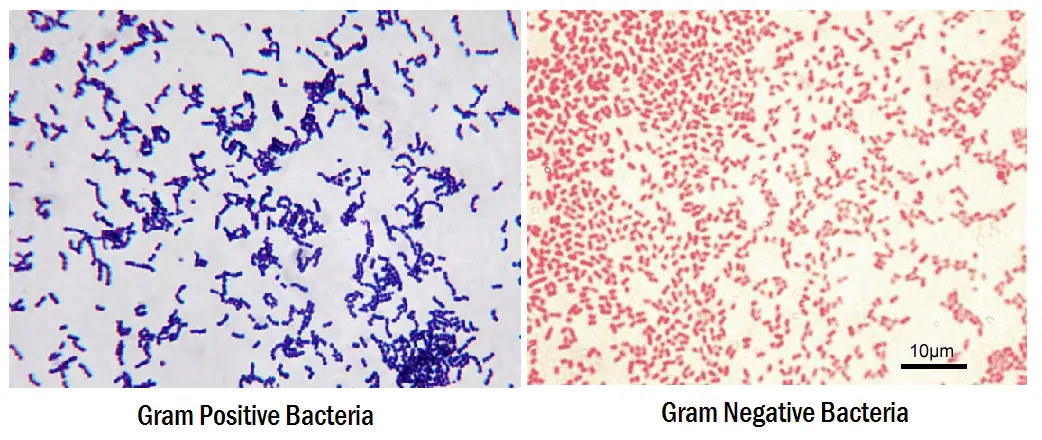Gram staining, named for its originator in 1884, is the central method in microbiology for categorizing and identifying bacterial strains. The traditional five-step process results in two differently-colored fixed bacterial cells, depending on their cell wall composition. Gram-positive will appear dark purple (from the initial violet stain) and gram-negative will be a pink to red color from the final counterstain of safranin.

Figure 1. Gram Positive and Gram Negative Bacteria (image courtesy of LaboratoryInfo.com)
The different colors are due to a polymer called peptidoglycan that is a part of the bacterial cell wall. Gram-positive bacteria have a majority (50-90%) of peptidoglycan present, and Gram-negative bacteria have a much smaller proportion (often only 10%). This affects the amount of violet dye that is retained during the process. Since the Gram-negative bacteria have so little dye to start with, it is quickly removed during the procedure, and the final safranin counterstain adds the pink color to aid visibility.
| Step | Laboratory Techniques |
| 1. | Cell fixation-either heat-fixation or methanol treatment |
| 2. | Primary Stain-Crystal Violet or equivalent |
| 3. | Dye Binding (Mordant) Application-Iodine or equivalent |
| 4. | Decolorization-Addition of ethanol or acetone |
| 5. | Counterstain-Safranin or equivalent |
Gram staining gives far faster results than culturing, and speed is very important when diagnosing an infection in a medical setting.
The most well-known specimen of Gram-negative bacteria is E. coli. Common examples of Gram-positive bacteria include Staphylococcus (the bacteria that causes Staph infections, a major problem in hospitals) and Listeria (the cause of a serious infection called Listeriosis in those with weakened immune systems).
More modern updates to the traditional Gram staining procedure have further expanded its usage, and many kits and alternative dyes such as Hexidium Iodide are now commonly employed.
</div> </div>
